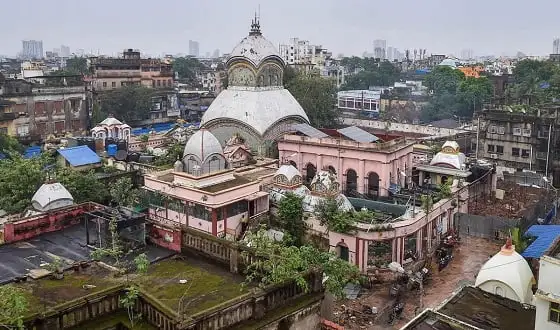The Kalighat Kali Temple in Kolkata is one of the most well-known Hindu pilgrimage sites in all of India, and it is recognized as one of India's 51 Shakti Peethas. Kalighat Temple is most enjoyable between 6 a.m. and 7 a.m., or later in the evening, as it is open up to 10:30 p.m. If you go on a Wednesday or Thursday, you'll also beat the throngs.
In addition, temperatures in Kolkata tend to be more bearable from October to March. You can observe either the Lakshmi Pooja on Diwali or the Kali Pooja in the Hindu month of Kartik.

However, the crowd multiplies by a factor of a hundred on Tuesdays and Saturdays because those days are seen as particularly lucky.
Kalighat Temple has its summer season during the months of March and June. Extreme heat and humidity are present, with temperatures ranging from the mid-20s to the high-40s. The hottest weather of the year typically occurs in April, when highs typically reach or even exceed 40 degrees Celsius.
As a result, vacationers should steer clear. The unconventional tourist may be drawn to seasonal celebrations in order to experience them for themselves. Some of these include the March celebration of Dol Purnima and the April celebration of Noboborsho, the Bengali New Year.
Kalighat Temple’s monsoon season starts in June and lasts until the end of September. The average annual rainfall in the state varies from 120 cm - 250 cm throughout different regions. Rainfall is abundant in the highlands, although the western flat sees much less water.
Droughts are also a problem in several parts of, including the Bankura and Purulia districts. Tourists can still enjoy the moderately rainy areas, but they should be prepared for excessive humidity.
Kalighat Temple has its winter season from the middle of October and the beginning of February. During the winter, temperatures often hover around 15 degrees Celsius. The eastern Himalayan area in West Bengal has considerable snowfall during the coldest month of January.
Statewide lows average around 5 degrees Celsius. One of the most popular things to do at this time of year is to travel to the Sunderbans, the largest delta in the world and the natural habitat of the Royal Bengal tiger. The sunny skies and mild temperatures make for a relaxing outing.